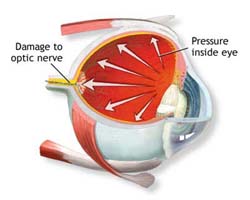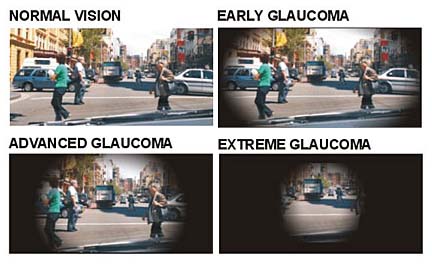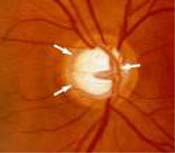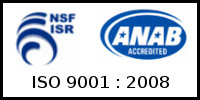
Glaucoma

Q: What is Glaucoma?
A. Certain characteristic features seen in the visual fields, the optic nerve head, and in the eye are termed glaucoma. These changes may or may not be depend on the eye pressure.
Q. What are these characteristic features?
A. Field defect (blind area) in the periphery, thinning of the nerve fibre layer, increase in the cup disc ratio, narrowing of the angle of the eye, increase Intra Ocular Pressure (IOP).

Q. Do I have glaucoma, if my eye pressure is high?
A. Situation 1: If IOP is high but other features are absent you have ocular hypertension or you are a glaucoma suspect; you may or may not be advised treatment.
Situation 2: Increase IOP with other features present you have glaucoma; treatment must.
Situation 3: Normal IOP but other features present you have normal tension glaucoma; treatment required.

Q. What are the types of glaucoma?
A. Angle closure glaucoma (ACG) in which the outflow of the eye fluid is blocked, Open angle glaucoma (OAG) in which outflow passage per se is physically open but due to certain reasons the outflow is blocked and therefore, fluid passage is obstructed.
Glaucoma may also be childhood or adult onset glaucoma, Acute or Chronic glaucoma, Primary or secondary glaucoma.
Q: Who are the people at risk?
A. Glaucoma in one eye, Family history, High myopes, Trauma, Very small eye etc.,
Q: If I have these risk factors how often should I get my eyes check?
A. Ideally let your doctor decide, but if two or more risk factors are present you should be examined by an eye surgeon at least once a year, or may be more often.
Q: What are the signs and symptoms?
A. Signs and symptoms may vary in each type of glaucoma:
COAG; patient may be completely asymptomatic.
AACG; headache, nausea, giddiness, rings around light, redness, blur vision.
Q: What are the routine tests done for glaucoma?
A. Routinely vision examination, pressure checkup, gonioscopy (in which angle of the is seen), perimetry (in which visual fields are evaluated), Pachymetry (to measure central corneal thickness), 90D examination for nerve head; newer test include OCT, HRT, GDx.
Q: How early can we diagnose glaucoma?
A. Sometimes difficult to answer; some tests can detect even 10-15% of damage.
Q: How do you treat glaucoma?
A. Treatment options are individualized. Your doctor may depending on your type and severity of glaucoma decide medical, Laser or surgical line of treatment. Your doctor will also answer any other question that you may have.
Eye Care - Patient Education

